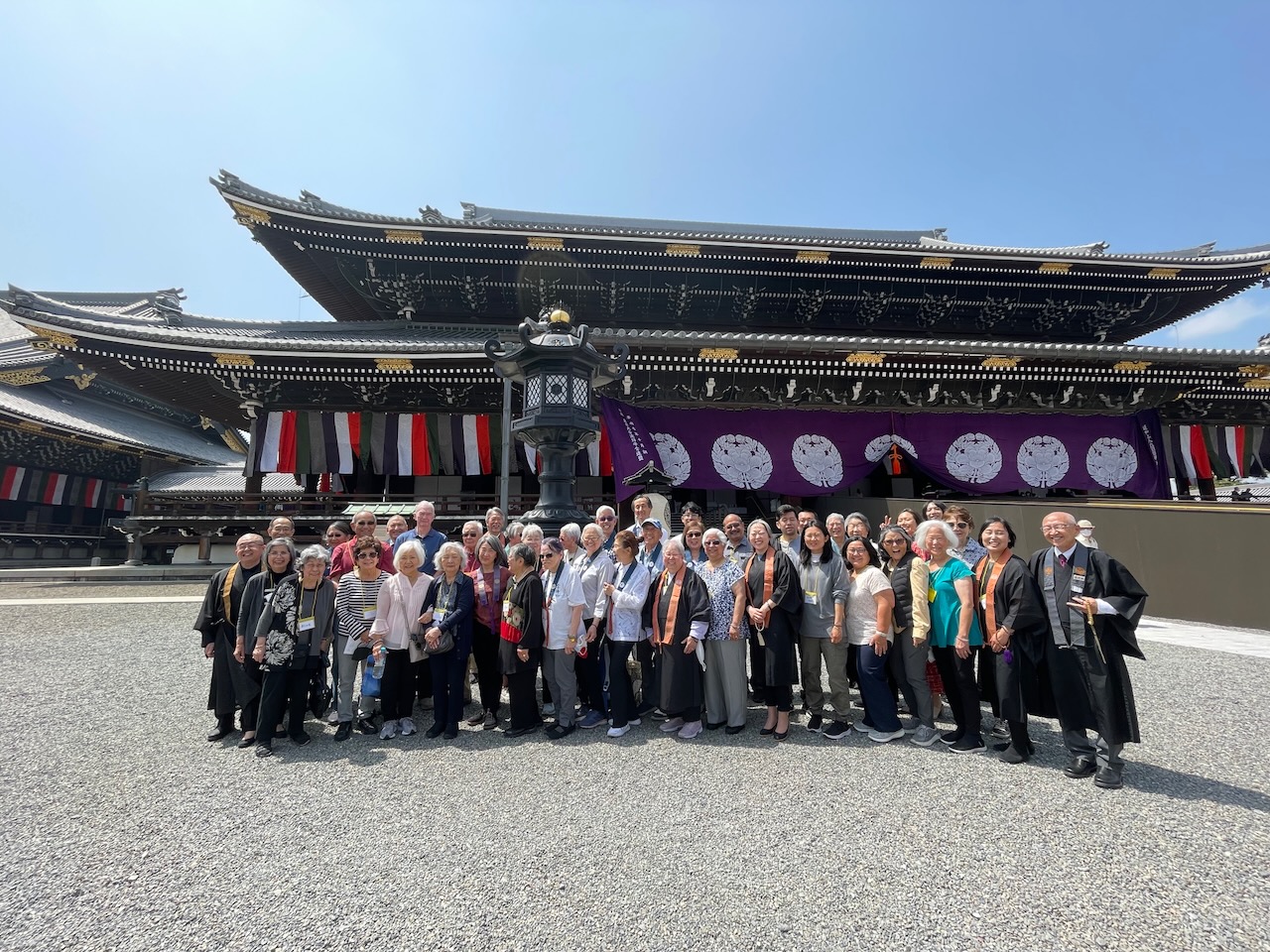
By Rev. Ken Yamada
This year marks the 850th Birthday of Shinran Shonin and the 800th Anniversary of Jodo Shinshu Buddhism’s founding. In April, a group of us from the North America District traveled to Japan to attend the commemoration at Higashi Honganji’s main temple.
These major commemorations are held once every 50 years so it was particularly meaningful that about 40 people from California, Illinois, and Florida could participate. Separately, a Hawaii District group also attended.
When I arrived in Kyoto in mid-April, some 30 tour buses were parked in front of the giant Higashi Honganji mother temple, bringing attendees from various parts of Japan. Special services were held each day throughout the month. Festive banners hung from the large halls, as well as bamboo decorations, flags and other displays.

I’d been in Japan already a week, so thankfully my jetlag was receding. However most of the group arrived the morning of the tour after taking a “red-eye” flight from Los Angeles. Before checking into the hotel, we boarded a bus and began our tour of historical sites connected to Shinran’s life.
Our stop the first day was Mt. Hiei, which lies northeast of Kyoto city. The bus climbed the steep mountain to the ancient temple Enryaku-ji. In the seventh century, Buddhist master Saichō lived in a hermitage on the mountain, which eventually became the center of Tendai Buddhism and a great organizational power. Shinran lived there as a monk for 20 years, from age nine to 29 years old.
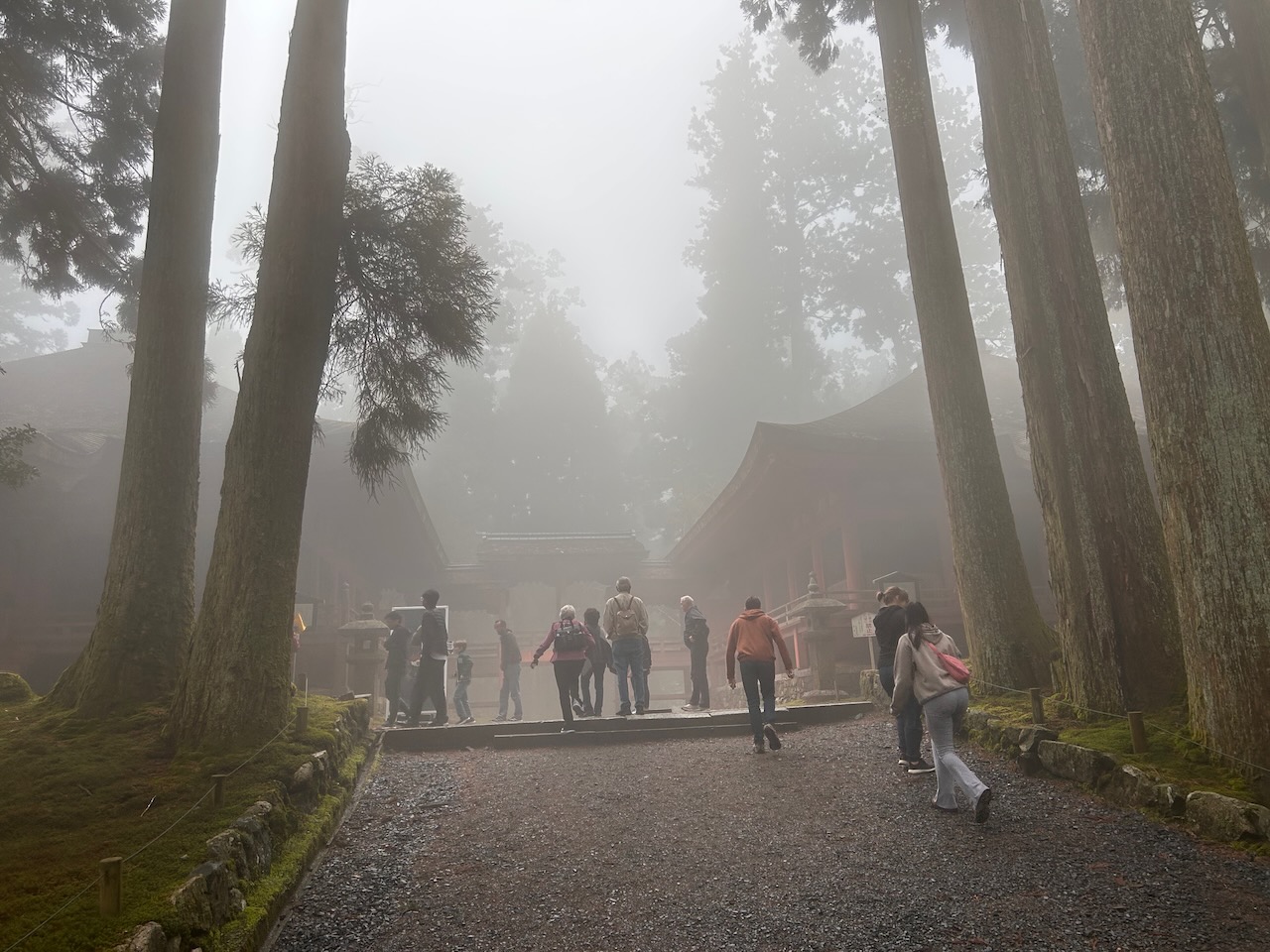
The air was chilly and fog hung in the air. We walked the mountain paths and visited various temples, including the main hall, which was being renovated and was covered by a metal housing, so the famous temple’s roof and outer walls weren’t visible. The cold, snowy winters here must have been severe for young Shinran. He eventually abandoned this life for Kyoto, seeking a new path.
The next day we walked in the warm sun from our hotel near Kyoto Station to Higashi Honganji’s Shōsei-en Garden, a few blocks from the mother temple. In the 17th Century, Shōgun Tokugawa Iemitsu donated eight acres of land, which became Shōsei-en, a city block-size traditional garden with large pond, wooden bridge, and small wooden structures including tea house. Peacefully sitting among the birds and bees, one easily forgets the surrounding city until Kyoto Tower comes into view beyond the trees.
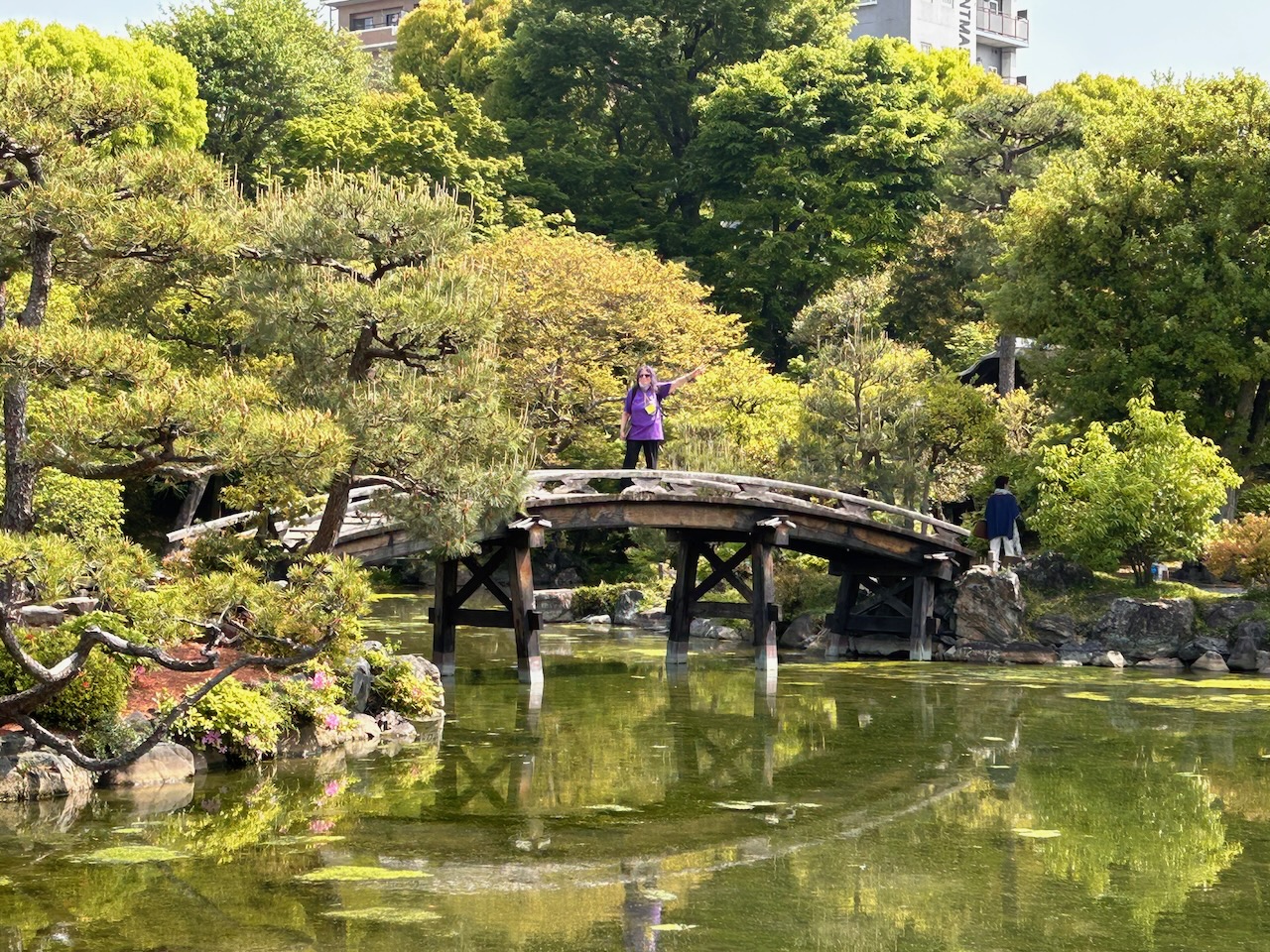
From the garden, we walked through narrow streets, past shops selling “nenju” (Buddhist beads) and altar ornaments, crossed Karasuma boulevard and entered beneath a towering front gate into the grounds of Shinshu Honbyō, Higashi Honganji’s mother temple.
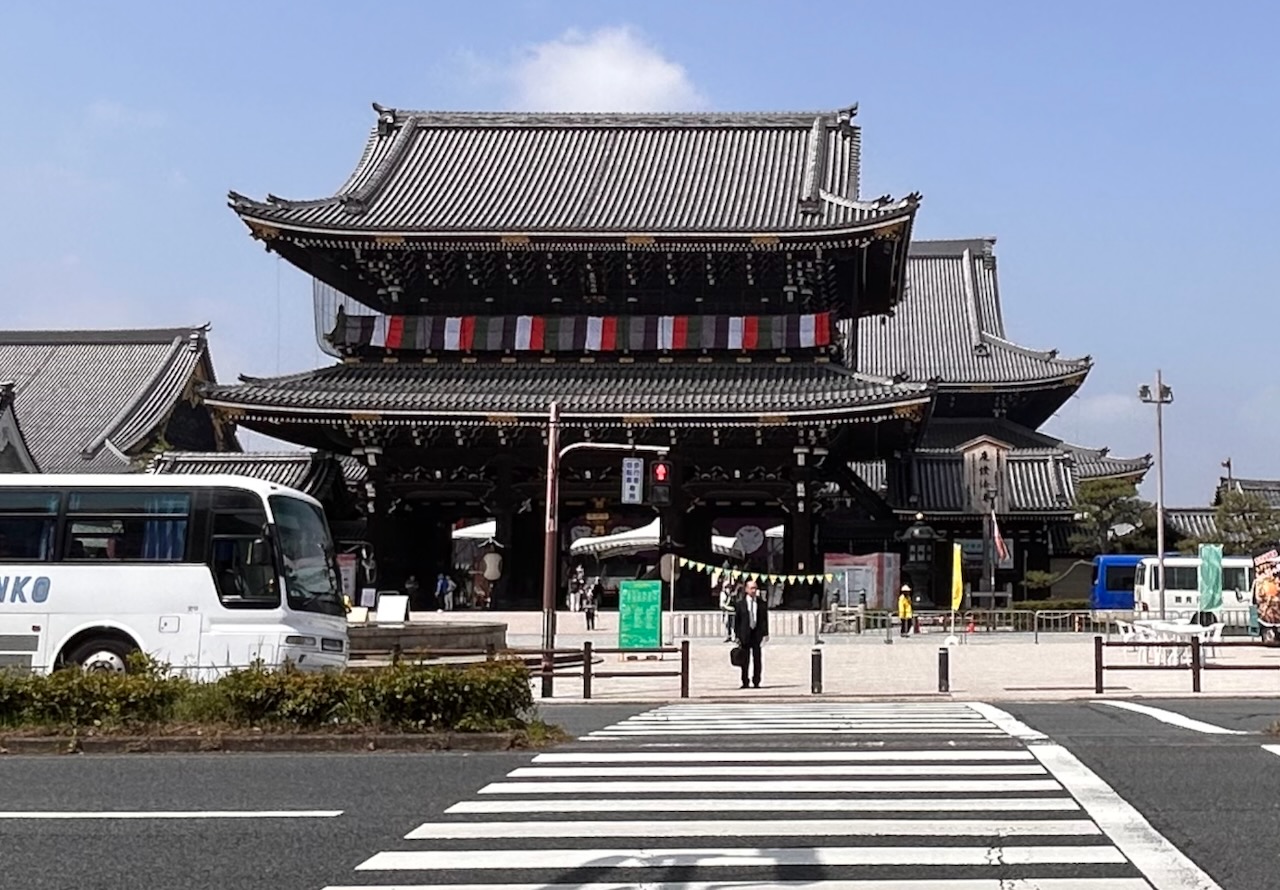
The 400-year-old temple sits on 23 acres, roughly three city blocks, and is built like a fortress, encircled by a huge wall and narrow water-filled moat. The main building, an enormous hall called the “Founder’s Hall” (Japanese: Goei-dō) is one of the world’s largest wooden structures, which can accommodate some 3,000 people.
On the central altar sits a statue of Shinran Shonin, which some people find odd, expecting instead to find a Buddha image. However, Shinshu Honbyō is meant to honor Jodo Shinshu’s founder, the building originating first as a small structure on Kyoto’s east side, which housed Shinran’s ashes, and later, Shinran’s image.
We attended a “Buddhist name ceremony” (Japanese: Kikyōshiki), in which a few people from our group participated. Receiving a Buddhist name, consisting of two Chinese characters with a Buddhist connotation, symbolizes a commitment to living in accord with the Jodo Shinshu teachings. That day’s ceremony was particularly meaningful because the head officiant was Overseas District Abbot Rev. Yul Ōtani, who’s the son of Abbot Chōyu Ōtani, both of whom share Shinran’s blood line. Making such commitment before Shinran’s image was quite moving.
Nearby halls featured special exhibits on Shinran’s life, images and writings. A special treat for us was a “Rakugo” performance held in the modern, underground auditorium.

Rakugo is a traditional Japanese form of storytelling, in which the narrator, dressed in kimono, sitting on a cushion on stage with folding fan in hand, tells a humorous story. It’s said rakugo’s origins started hundreds of years ago with Shinshu priests, whose Dharma talks were so entertaining, they attracted a following. For non-Japanese speakers, this art form may be hard to appreciate, because what makes the dialogue interesting is based on unspoken meaning, nuance, dialect, and mispronouncing words. Even so, we got a taste of rakugo with help from subtitles projected on a screen.
The next morning we attended the commemoration service. As we listened to the chanting, simultaneous chanting was held in the temple next to the hall where we sat. This was the first time two services were held together in the Founder’s Hall and the Amida Hall at the same time. Afterwards, we moved closer to the main altar with Shinran’s image, then entered the Amida Hall to take a look. I was struck by the brilliance of the gold covering the screens and altar surrounding the Amida Buddha statue. The entire building was renovated in recent years, really evoking a beautiful “Pure Land.” Unfortunately, photography was not allowed inside.
Next, Hawaii and North America District members joined Brazil district members, nearly 100 people total, for lunch in a new meeting hall. We were greeted by Abbott Ōtani and the Overseas District Abbot. Being both from Brazil and fluent in Japanese, Portuguese, and English, they mingled easily with us foreigners.
In the afternoon, some of us saw a special exhibit called “Life and Legacy of Shinran” at the Kyoto National Museum, featuring images, books, and writings, including calligraphy written in Shinran’s own hand. Such a collection was rare indeed.
Our last full day in Kyoto included a visit to Ōtani Sobyō (mausoleum), where Shinran’s ashes are buried. After Shinran passed away in 1272, his daughter Kakushinni built a mausoleum, which eventually moved on various occasions. In 1602, after Higashi Honganji and Nishi Honganji split, the mausoleum was constructed at the present location. In 1745, Shōgun Tokugawa Yoshimune donated another eight acres, which allowed expansion of the grounds. The site is also home to the graves of numerous Shinshu followers.
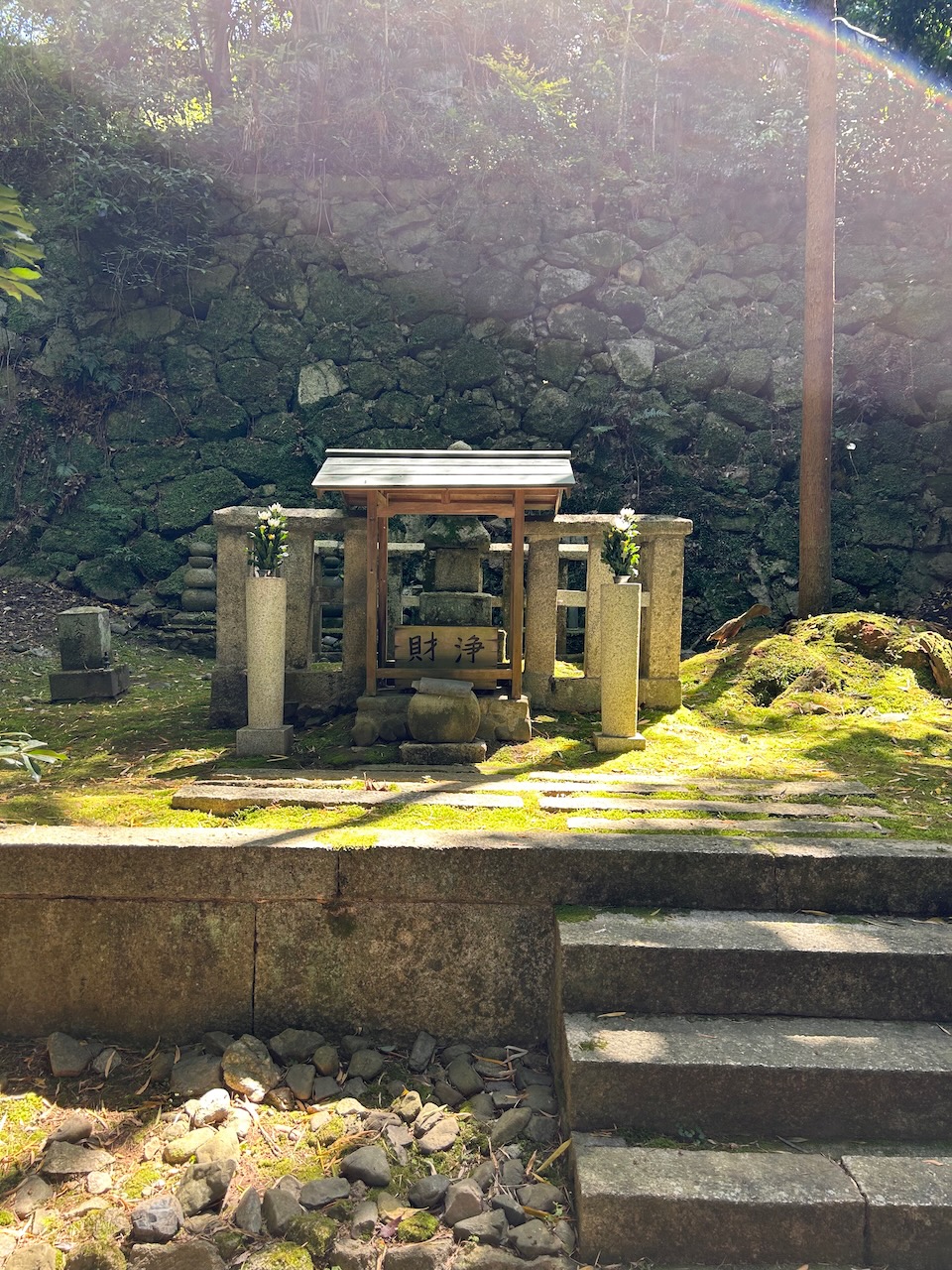
A little farther down the road was Sōtai-in, a small unassuming old temple that’s most notable for being the location where Shinran’s teacher, Hōnen Shonin, stayed in a hut called Yoshimizu when they first met. Inside, there’s a wooden statue of a standing Shinran, depicted with thick ankles and sturdy feet. We were invited to touch his feet, so we too could have strong legs.
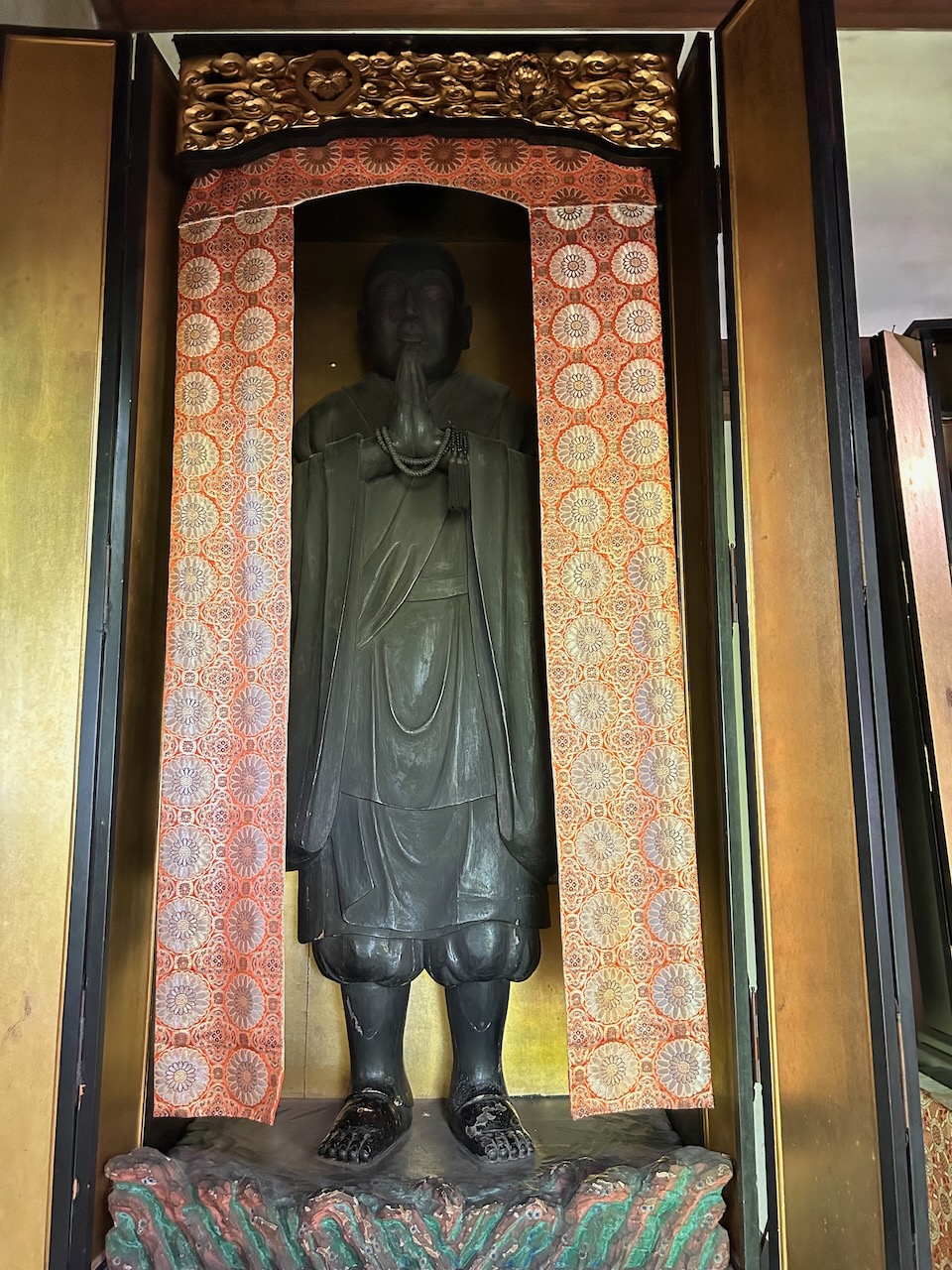
A small stone monument in the back marked the spot of Hōnen’s hut. A straight-as-an-arrow tree stood nearby. According to legend, Shinran’s walking stick grew into this tall tree.
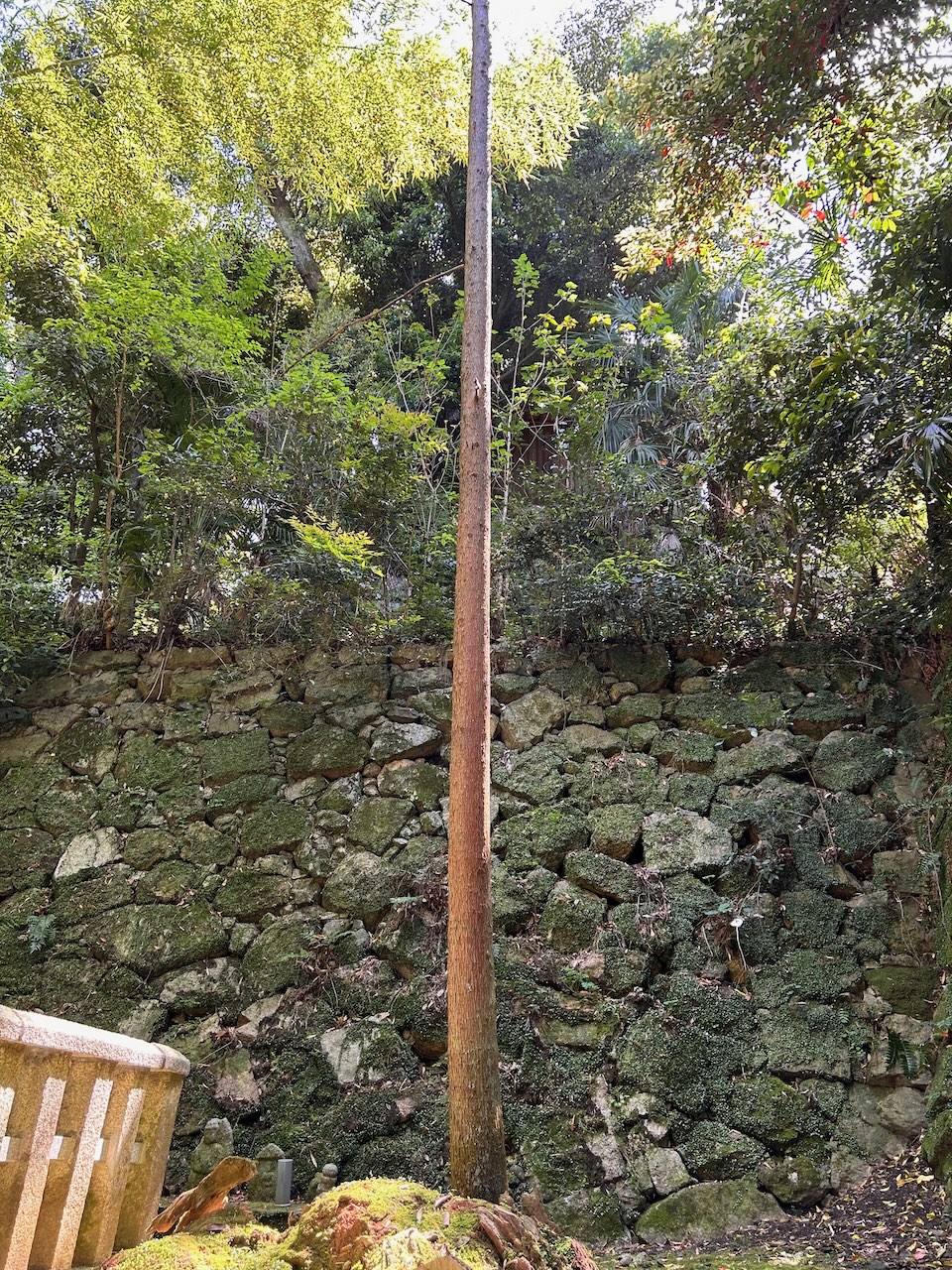
Nearby was Chion-in, the headquarters of the Jōdo-shu sect of Buddhism, founded by Hōnen. There’s a huge bell weighing 70 tons. The bell was cast in 1636 and is rung 108 times on New Year’s eve, which has become a Kyoto cultural event.
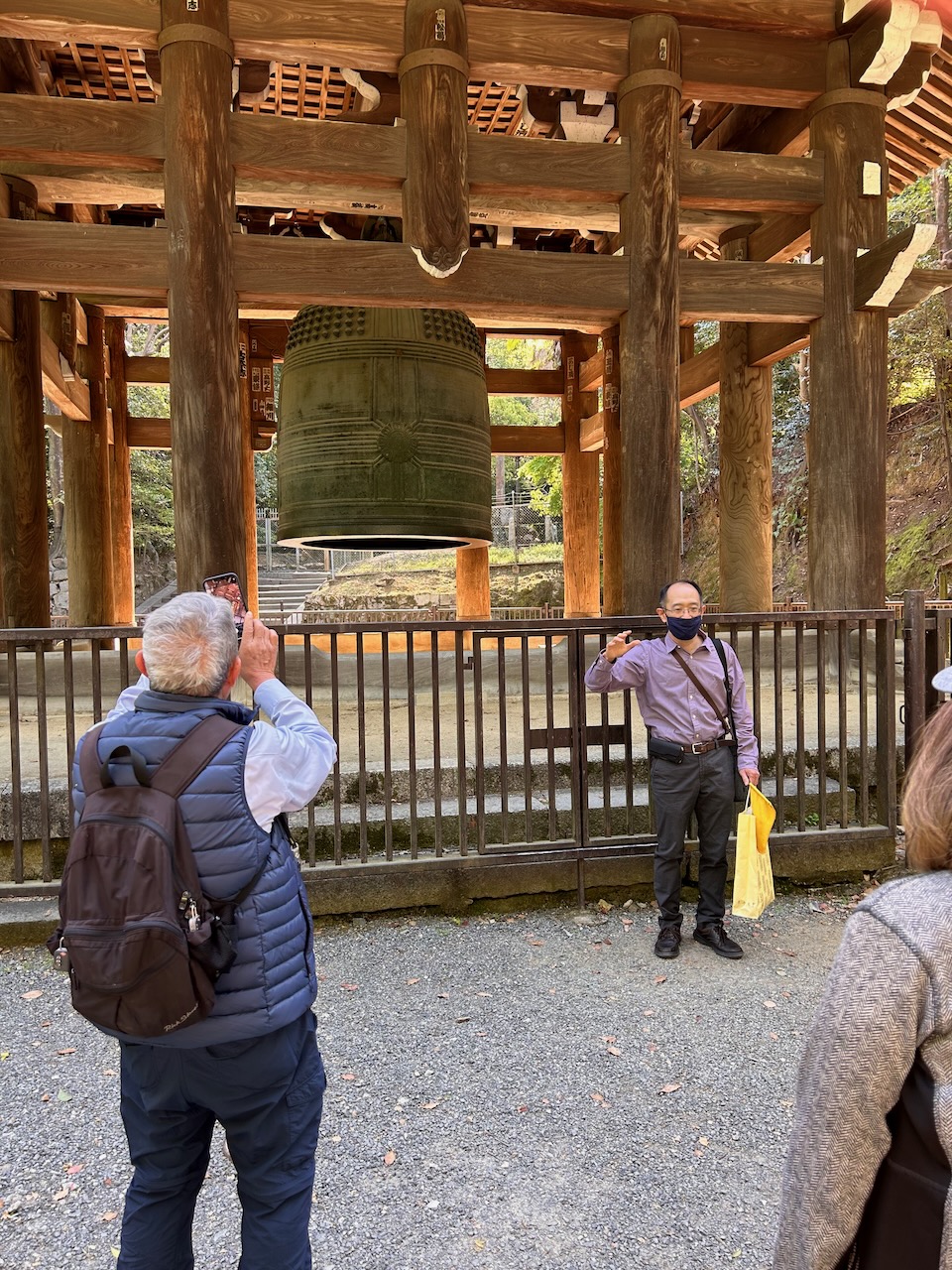
Similar to Jodo Shinshu, Hōnen promoted nenbutusu, reciting “Namu Amida Butsu,” however priests keep shaved heads and wear traditional robes, following strict rules.
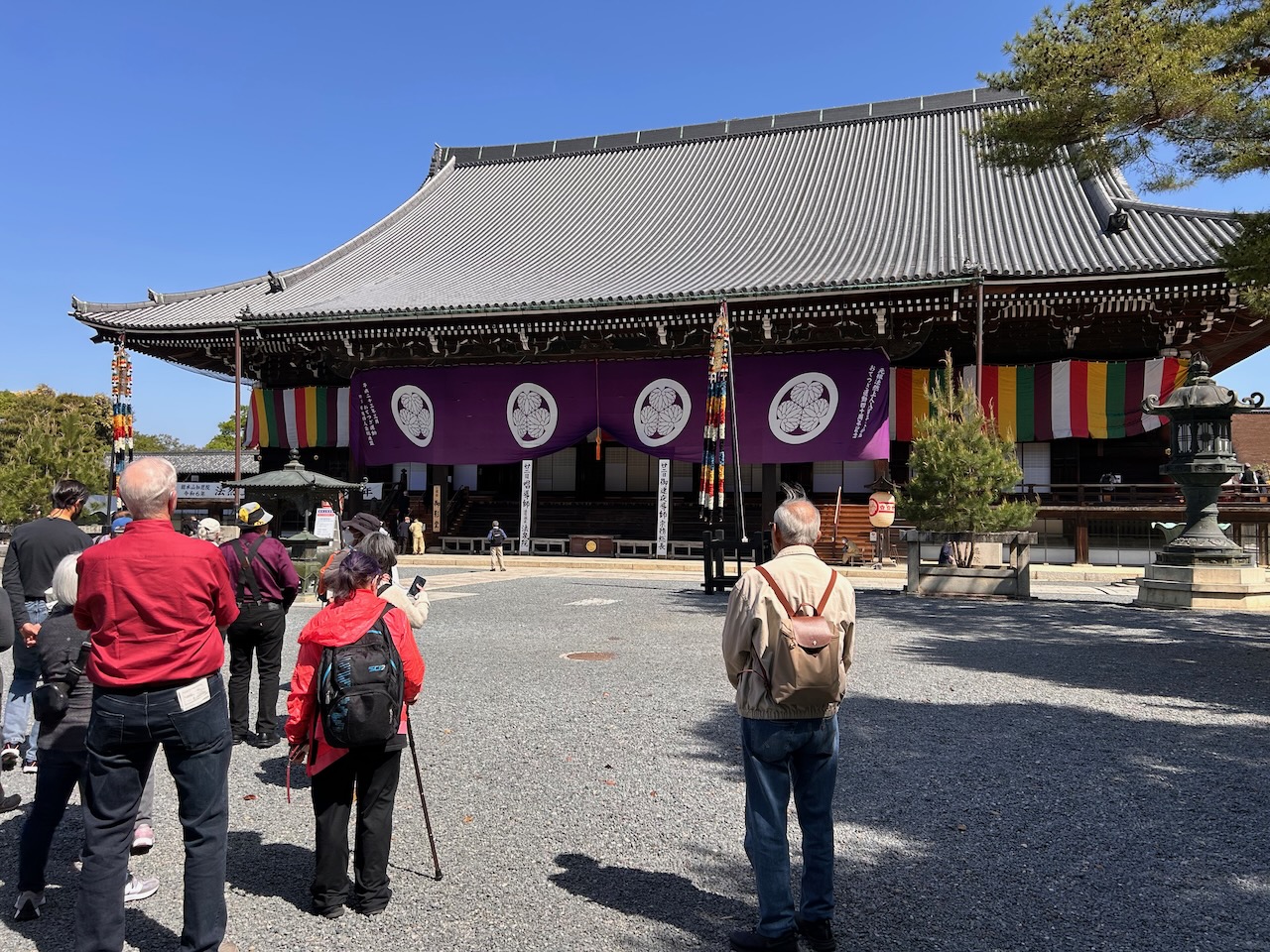
In the same neighborhood lies Sōtai-in, a humble little temple, which marks the place where Shinran’s daughter Kakushinni first interred Shinran’s ashes and built a mausoleum. Rennyo Shonin, considered the “second founder of Jodo Shinshu” was born there.
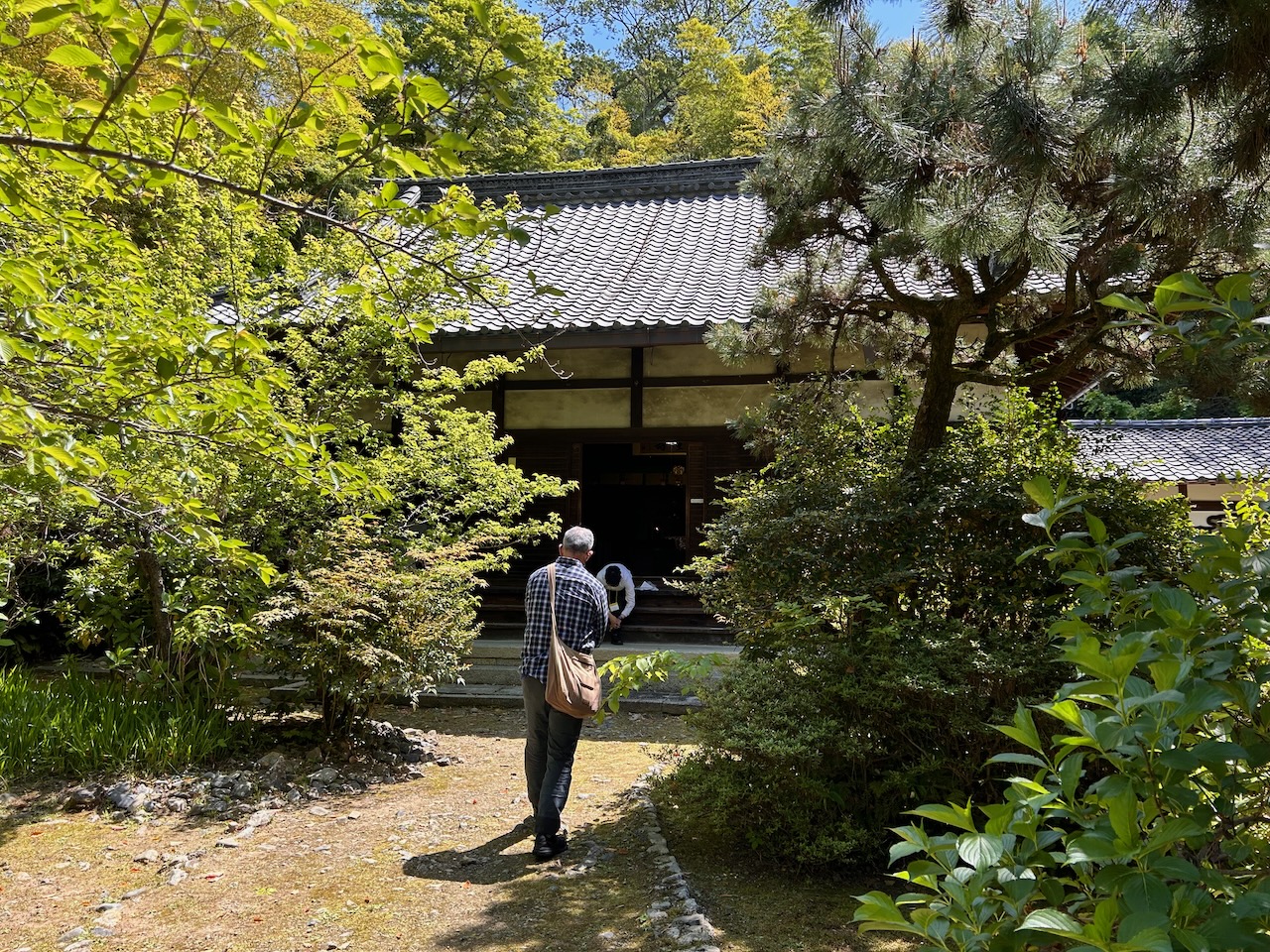
Our path eventually led to Shōren-in, the temple where Shinran was ordained at the age of nine years old. Although not the original location, this Tendai temple honors Shinran by displaying historical notes and a stone statue of Shinran as a child.
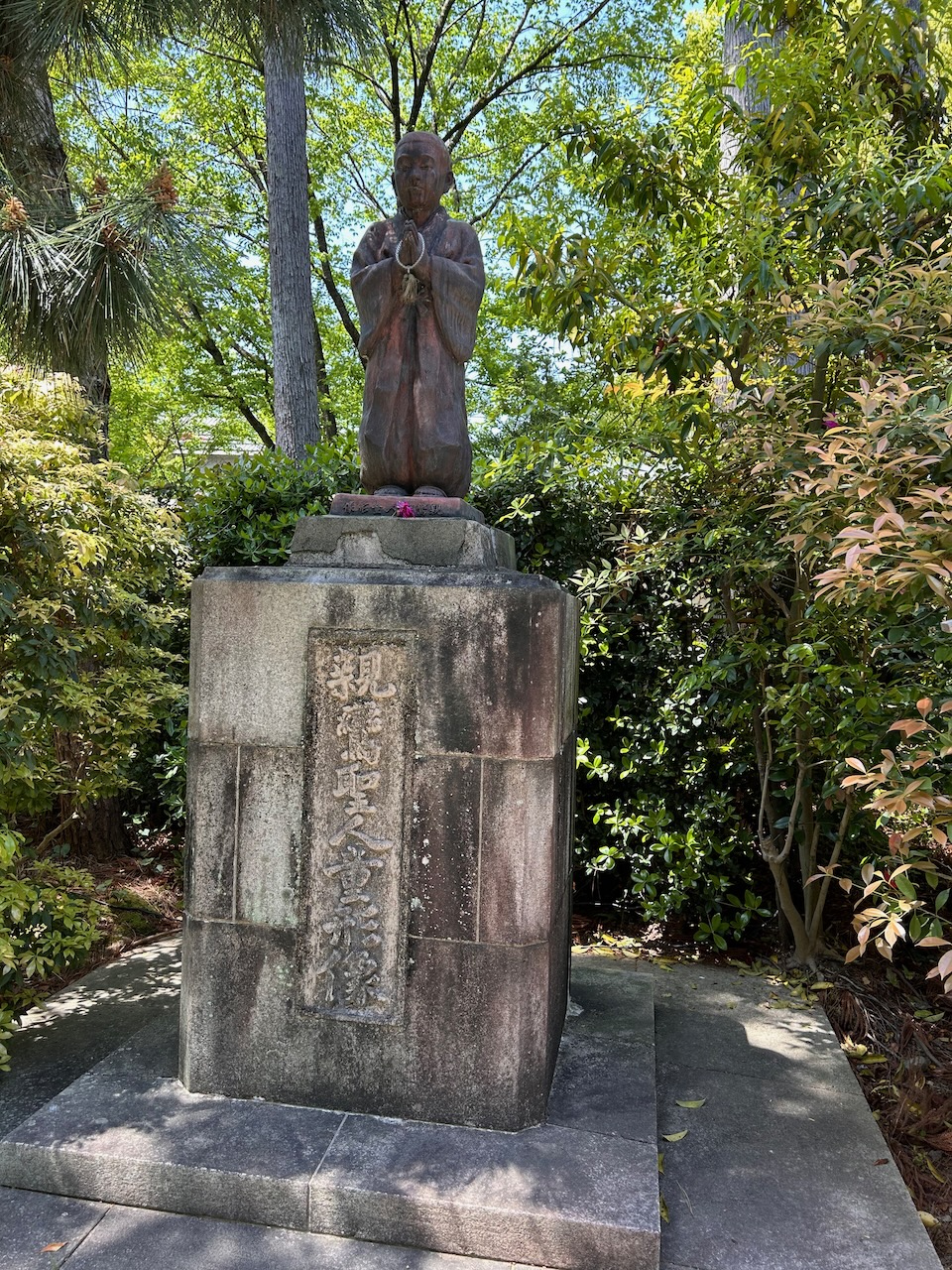
We boarded our bus to visit Hino Tanjō-in, an area on Kyoto’s southside thought to be Shinran’s birthplace. Nishi Honganji built a temple marking the location, replicating the design of 12th Century temples. The temple faces a big stone lantern, which stands in the middle of a courtyard with raked white sand. In olden times, the light from such a lantern reflected off the sand, helping illuminate the surroundings.

On an adjacent property was an added treat—Hōkaiji temple, which was built during the Heian period in the mid-11th Century. It was jarring to see a roof made of thick thatched straw, making me worry about fire danger. Inside, seated in the middle and taking up much of the space was a magnificent seated Amida Buddha statue. Unfortunately, no pictures allowed!
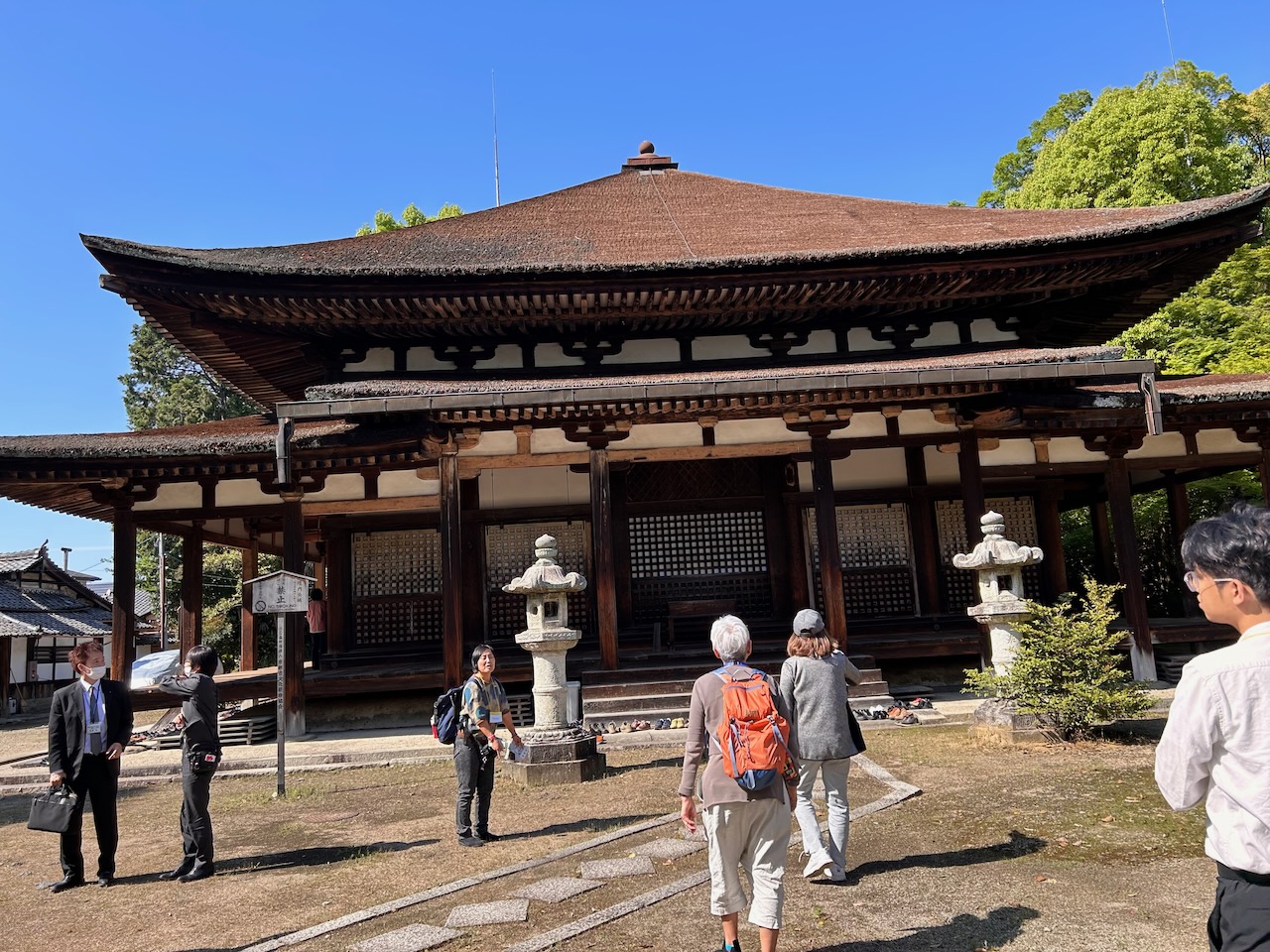
Upon returning to downtown Kyoto, we stopped at Rokkakudō temple, which today is called Chōhōji. After Shinran abandoned his life as a monk on Mt. Hiei, he made a pilgrimage to Rokkakudō, whose main image is Kannon, the bodhisattva of compassion. It’s thought Prince Shotoku Taishi, the first Buddhist regent of Japan, built this temple. On the 95th day of a 100-day pilgrimage, Shinran dreamed of Prince Shotoku, who told him he’d transform into a woman and become his helpmate. Immediately afterwards, Shinran went to Yoshimizu and met Hōnen, who became his teacher.
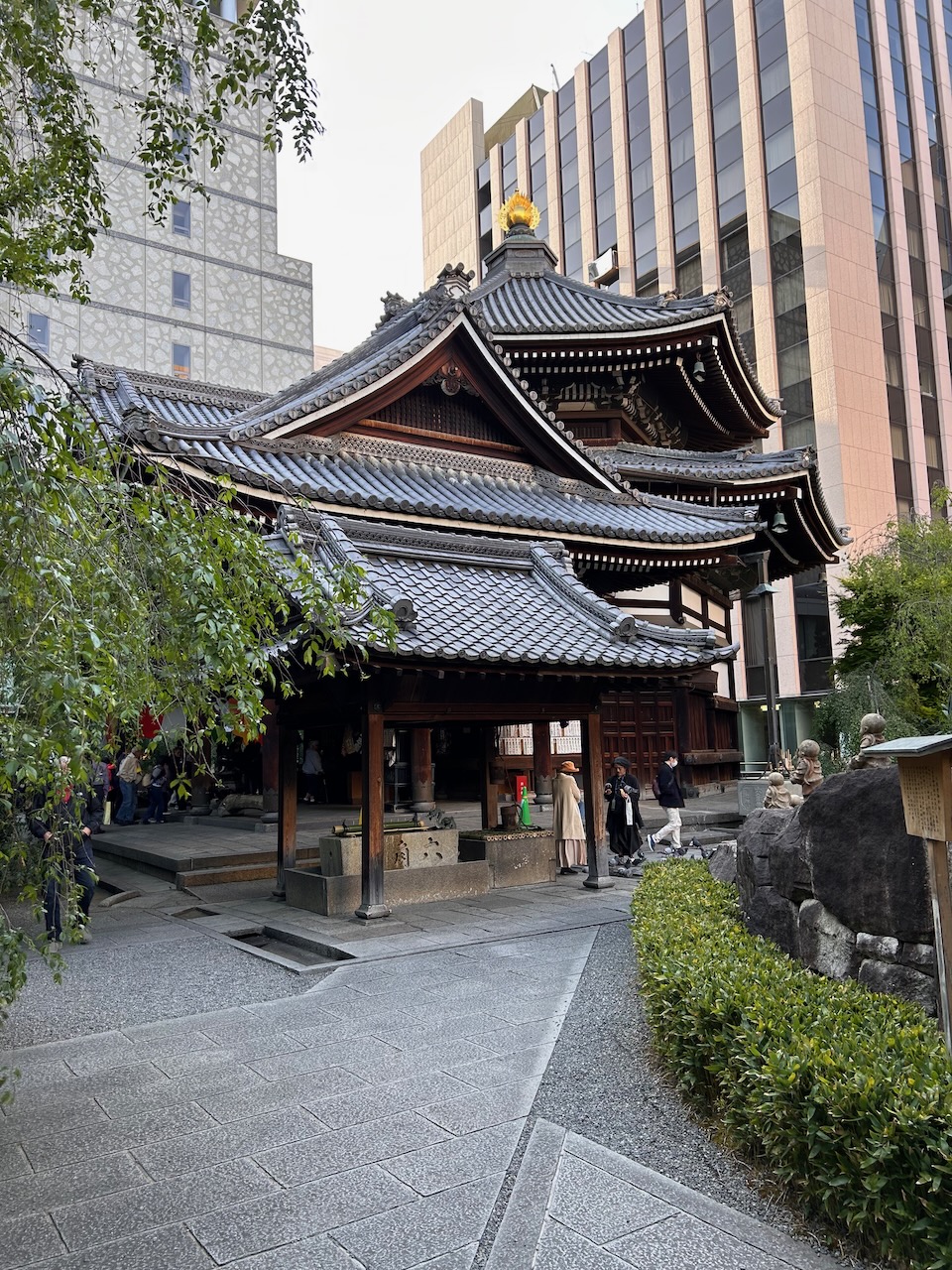
Rokkakudō, which means “six sided,” has a unique design with various peaked roofs, reminding me of the famous American colonial home, “House of the Seven Gables.” Today this ancient building is nestled between tall office buildings, incongruous with its surroundings.
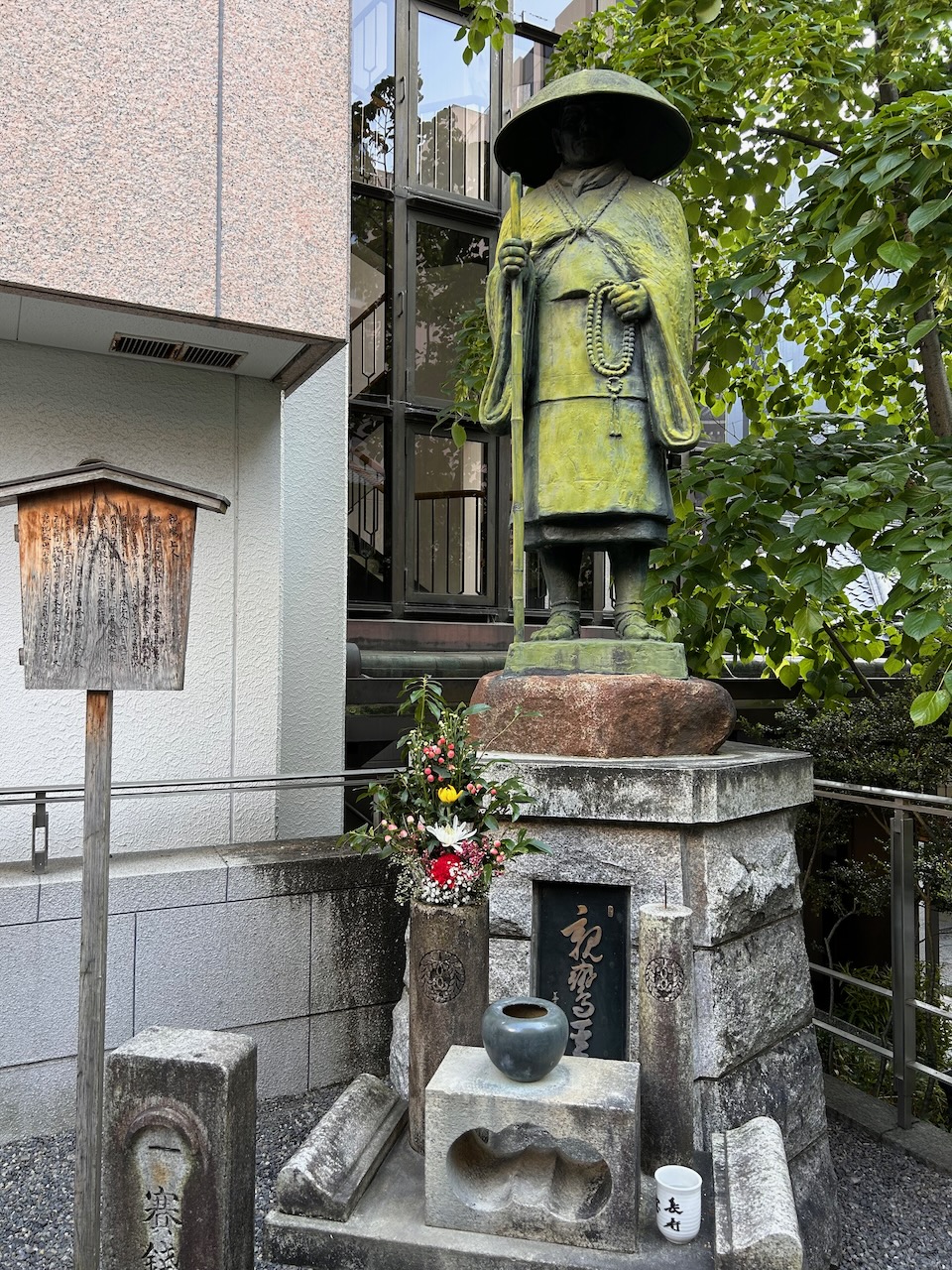
In just a few short days, we covered 35 years of Shinran’s life. Next, we departed Kyoto to travel to a region near the Japan Sea, where Shinran lived in exile.
Read Part II of this story here: Shinran Tour (Part II): Life in Exile
-Rev. Yamada is editor of Higashi Honganji’s Shinshu Center of America

